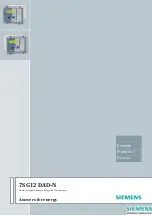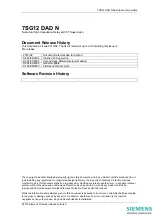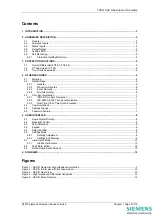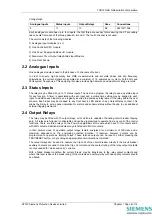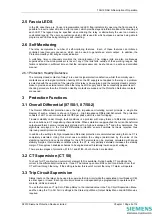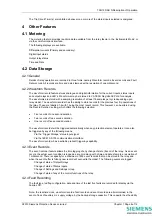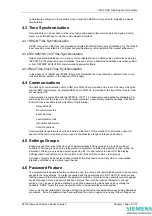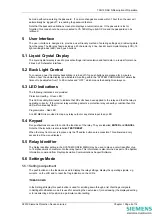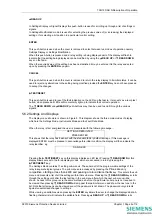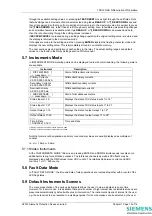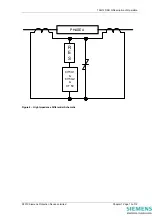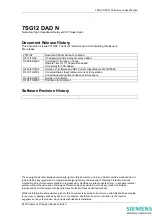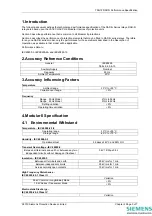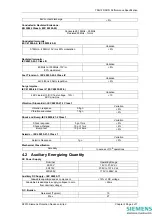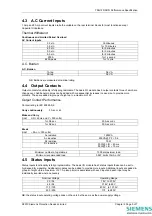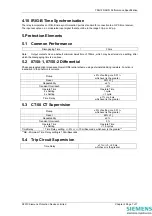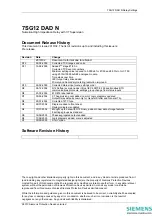
7SG12 DAD N Description of Operation
to maintain the charges on the real-time clock IC and the SRAM memory device for typically 2-3 weeks
time duration.
4.3 Time Synchronisation
Time and date can be set either via the relay fascia using appropriate commands in the System Config
menu, via an IRIG-B input or via the communications interface
4.3.1 IRIG-B Time Synchronisation
A BNC connector on the relay rear provides an isolated IRIG-B GPS time synchronisation port. The IRIG-B
input expects a modulated 3-6 Volt signal and provides time synchronisation to the nearest millisecond.
4.3.2 IEC 60870-5-103 Time Synchronisation
Relays connected individually or in a ring or star configuration can be directly time synchronised using the
IEC 60870-5-103 global time synchronisation. This can be from a dedicated substation automation system
or from REYDISP EVOLUTION communications support software.
4.3.3 Real Time Clock Time Synchronisation
In the absence of IRIG-B and IEC60870 time synchronisation the relay contains a real time clock circuit
which maintains real time in the absence of DC supply.
4.4 Communications
Two fibre optic communication ports, COM1 and COM 2b are provided at the rear of the relay, which give
superior EMC performance. An isolated RS232 port, COM 2a, is provided at the front of the relay for local
access using a PC.
Communication is compatible with the IEC870-5-103 FT 1.2 transmission and application standards. For
communication with the relay via a PC (personal computer) a user-friendly software package, REYDISP
EVOLUTION, is available to allow transfer of the following:
Relay Settings
Waveform Records
Event Records
Fault Data Records
Instrument and meters
Control Functions
Communications operation is described in detail in Section 4 of this manual. For information about all
aspects of the communications protocol used in the Modular II range of relays see Section 4.
4.5 Settings Groups
Depending upon the relay model then up to eight alternative setting groups are provided, making it
possible to edit one group while the relay protection algorithms operate using another ‘active’ group. An
indication of which group is being viewed is given by the ‘Gn’ character in the top left of the display.
Settings that do not indicate Gn in the top left corner of the LCD are common to all groups.
A change of group can be achieved either locally at the relay fascia or remotely via a communication
interface command or via a status input change.
4.6 Password Feature
The programmable password feature enables the user to enter a 4 character alpha numeric code to secure
access to the relay settings. The relay is supplied with the password set to ‘NOT ACTIVE’, which means
that the password feature is disabled. The password must be entered twice as a security measure against
accident changes. Once a password has been entered then it will be required thereafter to change
settings. It can, however, be de-activated by using the password to gain access and by entering the
password ‘NONE’. Again this must be entered twice to de-activate the security system.
As soon as the user attempts to change a setting the password is requested before any setting alterations
are allowed. Once the password has been validated, the user is ‘logged on’ and any further changes can
©2010 Siemens Protection Devices Limited
Chapter 1 Page 7 of 14
Summary of Contents for 7SG12 DAD-N
Page 2: ......

